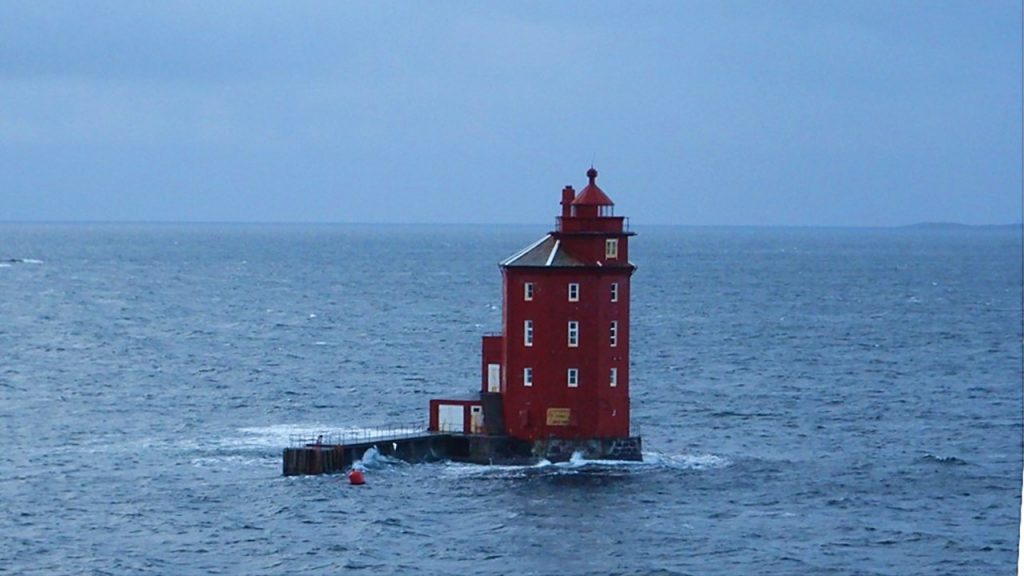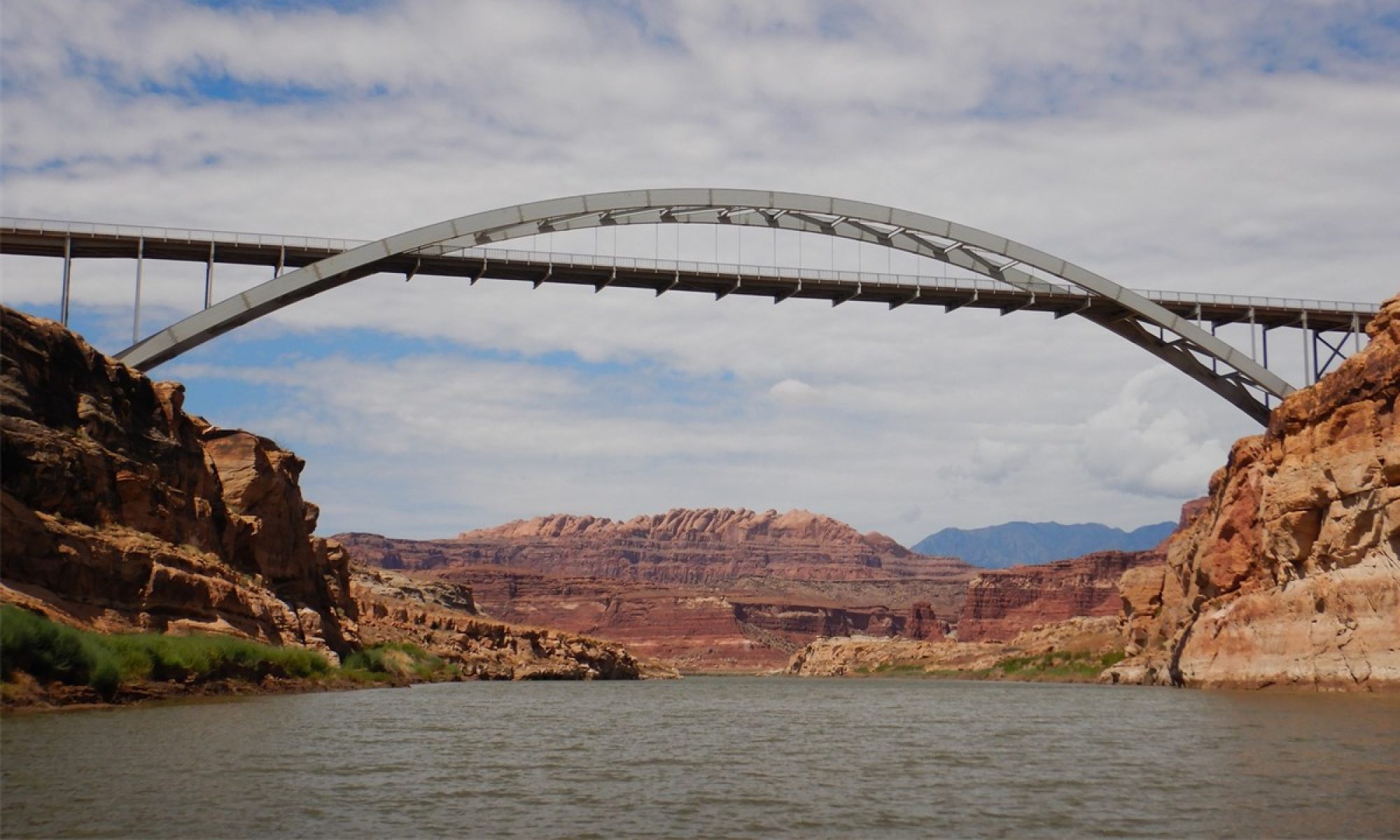January/February 2020
Part 1
A country that we have never visited and about which we had heard great things was Norway. Norway is a country of only 5.4 million residents distributed along a string of western coastal towns that are principally located at the terminus of deep fiords. Their eastern border is defined by a range of steep mountains, the Scandes, which historically served as the natural boundary between Norway and Sweden. The northern reaches of Norway wrap around the Scandinavian peninsula to reach the border of Russia and serves as the center of the multinational region of Finmark and Sápmi – home to the indigenous Sami people best known for their seasonal reindeer herding. We also had high hopes of finally seeing the Aurora Borealis – the Northern Lights – which reach a peak in the January and February months north of the Arctic Circle.
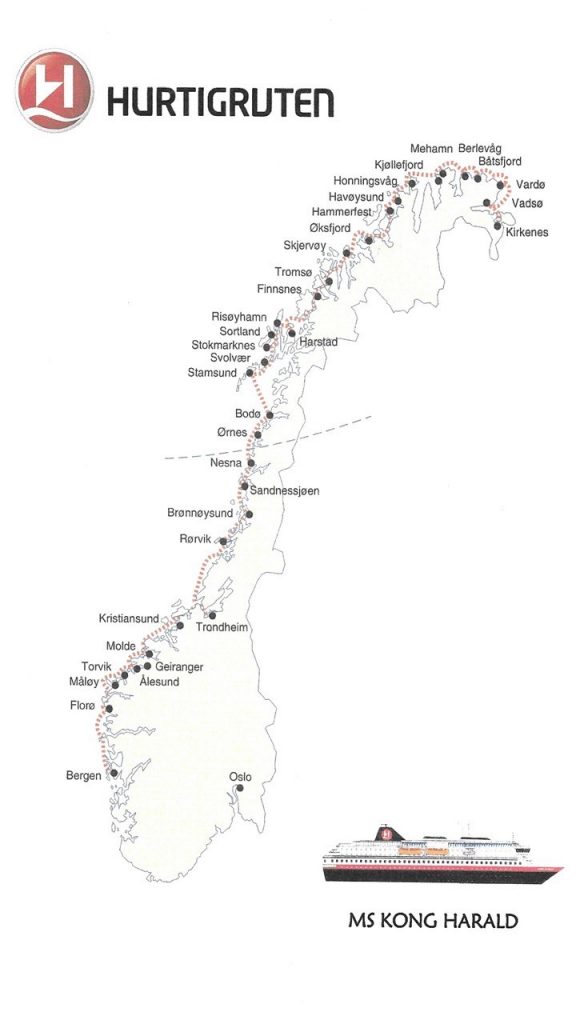
Having had a great experience on a Hurtigruten Expedition ship in Antarctica, we decided to make this adventure on a Hurtigruten Coastal ship responsible for deliveries and ferrying up and down the Norwegian coast. This would ensure that we would visit the maximum number of places stretching from our port of embarkation at Bergen in the south of Norway, all the way along the coast to the Russian border, and back – a two-week trip!
Out trip began with flights from the USA to Amsterdam, and then on to Bergen, Norway, arriving early on Thursday, January 30th. Bergen was founded in 1070 and was the capital of Norway until 1299. It was one of the most important trading centers of Europe providing transport of dried fish to the south and of dry goods to the north. The town once had 9 shipyards and 28 roperies making ship ropes until well into the 18th century. Today, the city is 180 square miles spread over a ragged coastline. Our hotel for the night was a Clarion hotel that was housed in the historic harbor shipping office building on the Bryggen wharf. The Bryggen’s historic wooden “Hanseatic” German merchant buildings located here are over 100 years-old and are built on raised wooden timbers that protect them from the occasional tidal flooding. Between each of these buildings are wooden walks that provide access to novel artisan shops. Across the street from the hotel is St. Mary’s Church, the oldest building in Bergen dating to the late 1100’s. The church was originally built for the predominantly Catholic merchants before the reformation that resulted in Lutheranism being declared to be Norway’s official religion in 1537. On the opposite side of our hotel was located the Bergenhus Fortress, the oldest fortress in Norway dating to the 1240’s which still remains under the command of Norway’s Royal Navy. That evening, we explored the wharf area including the local fish market, the shops surrounding the Vagsalmenningen Square, the Galleriet Mall and the local Starbucks, weathering the light rain. After dinner at the hotel, we took advantage of the view from the hotel’s historic 100ft-high tower before making plans for our day tomorrow and calling it a night.
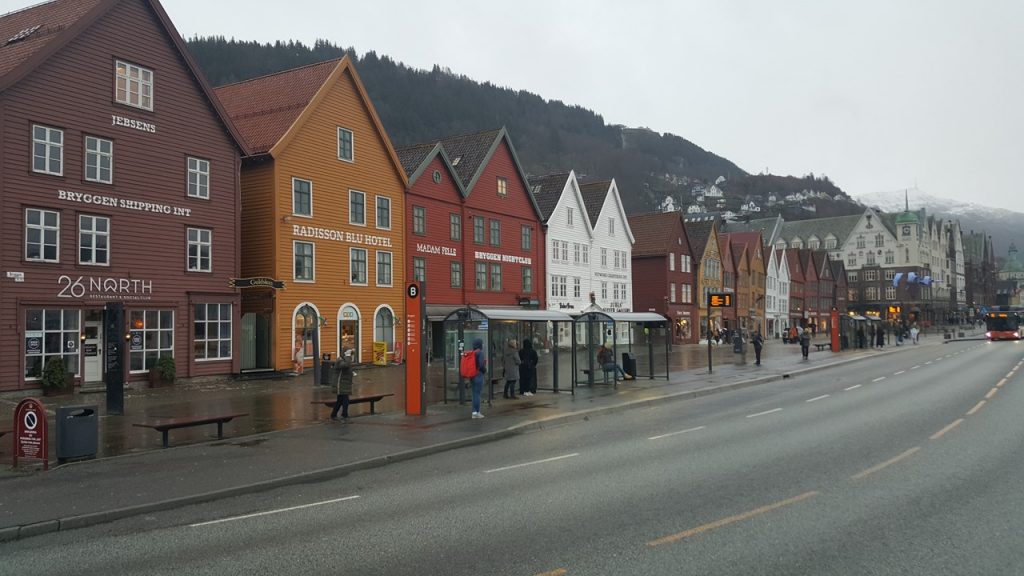
Friday morning began with an early breakfast at the hotel before embarking on a walk to the town’s funicular that would transport us up Mount Floyen which towers above the city of Bergen. The funicular appears to be both electric and cable driven as it hauls us up a steep grade through tunnels, under roads and up the mountainside, including stops at two small housing areas. Once at the top, we enjoy the spectacular views and examine the old funicular components before deciding to take on the long walk down. During our walk, the rains begin again in earnest. Bergen is known as the rainiest city on earth averaging 240 days of rain per year! This is a result of the moist air riding above the North Atlantic Current coming from Great Britain and dropping its rain as it encounters Bergen’s mountains. After finding our way back to the hotel, it was time to check out and take a brief bus tour of the area. After viewing various areas of the city, we headed out into the country to the little town of Troldhaugen – a suburb of Bergen and the former home of Norway’s most famous composer Edvard Grieg. Today, his home and study host a museum dedicated in his honor. After spending time learning more about his life, we re-boarded the bus and headed to our accommodations for the next two weeks – the Hurtigruten ship “Kong Harald”. Once settled, we enjoyed a buffet dinner and preview of the week before casting off at 9:30pm to begin our cruising adventure north.

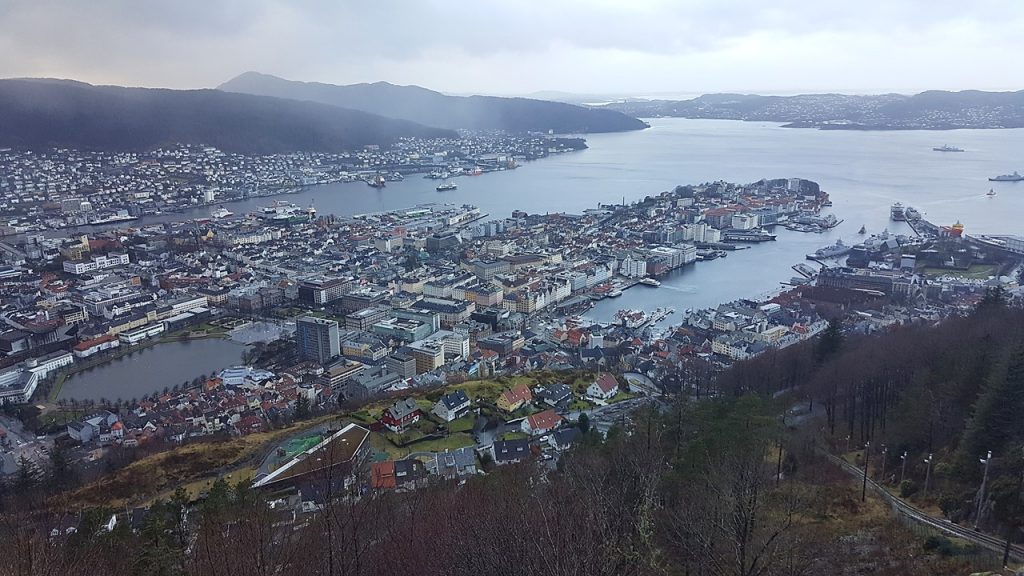

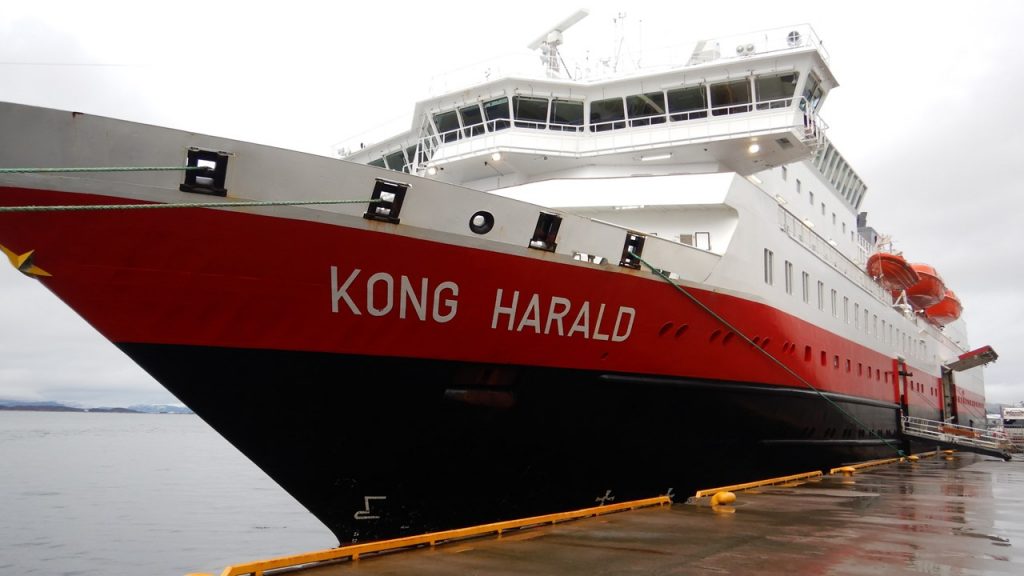
After 3 very brief stops in the night, (this coastal ship serves as a delivery ship and passenger and auto ferry, as well), and our first few hours at the mercy of the open seas, we arrived the next morning in the town of Alesund. Alesund sits near the mouth of Norway’s longest fiord and was rebuilt in the Art Nouveau style after the town’s wooden structures burnt to the ground in 1904. After a brief tour of the harbor and along the town’s cobbled streets, we climbed the 418 icy steps to the top of Aksla Mountain for spectacular views of the town and surrounding area and then walked down the winding path along the peninsula through 4” of freshly fallen snow. Along the way we passed statues of Rollon-Gange Rolv, the founder of Normandy and Kaiser Wilheim II who often visited the area, finally making it back to town in time to shop before re-boarding our ship.
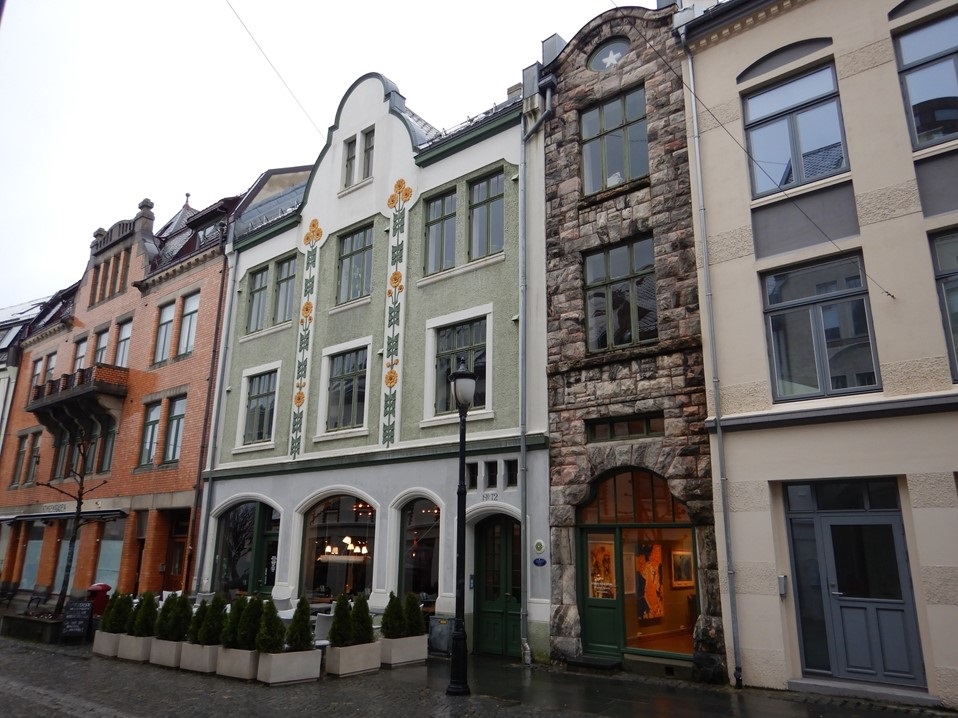
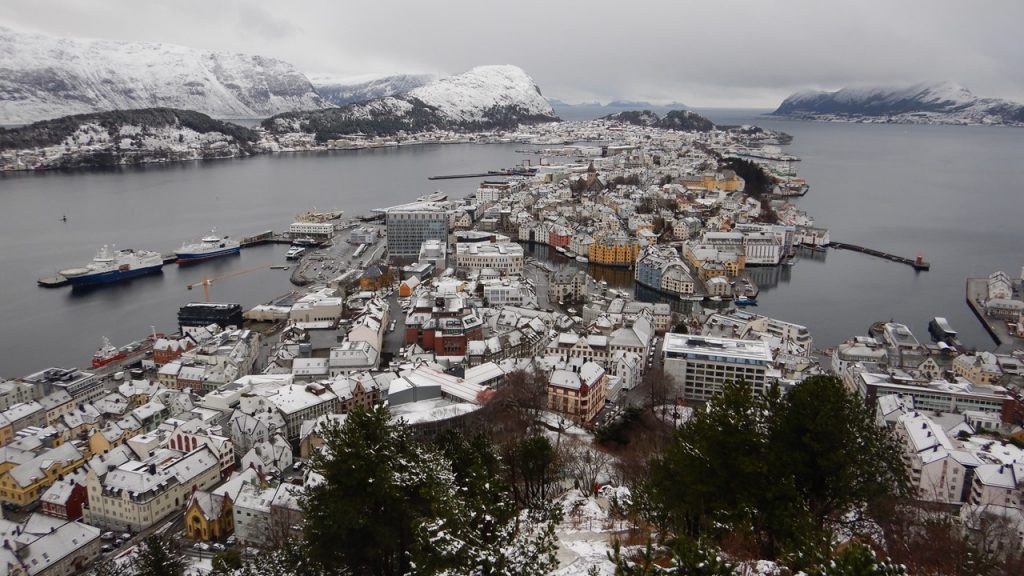
Our next port that afternoon was Molde – the “City of Roses”. Molde was extensively destroyed in WWII as the German Army leveled and burnt the town on their retreat at the end of the war. Today it serves as a popular summer-home location for wealthy residents and includes a brand new boardwalk and the 13,000 seat Aker soccer stadium as home for their local professional team. After dinner onboard, we have a chance to briefly explore our next stop at Kristiansund – a harbor town spread over three islands dating back to the Middle Ages. We checked out the monuments to ships and sailors before making a short trek to the local Kristiansund Church. It was night and the streets were empty, so we headed back to the ship for a night’s sleep and voyage.
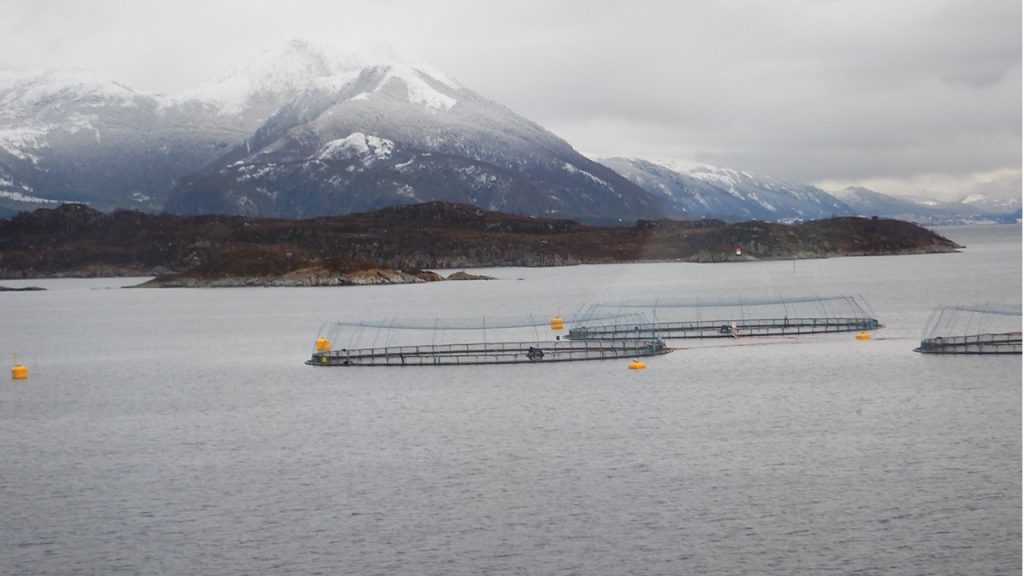


It is Sunday morning when we arrive in Trondheim, formerly known as Nidaros (“mouth of the river”) and Norway’s first capital from 872 until 1217. Leif Eriksson completed his military service here and the St. Olaf Shrine located here still attracts legions of pilgrims. Nidaros served at the religious center of Norway, and the seat of the archbishop diocese until the reformation in 1533. The city is Norway’s third largest (175,000 people) and is built around the River Nid (Nidelva) which snakes its way through town. After arriving, we board a bus for a “city tour” that climbs to an overlook before heading to a walk on the old Town Bridge. Most of the city was rebuilt after the great fire of 1681 destroyed much of the town. After visiting the bridge and marveling at the old, wooden warehouse buildings built on pilings along the river, we walk to the nearby Nidaros Cathedral – one of Northern Europe’s greatest Gothic memorials. Since it was Sunday, we had to wait in the Visitor’s Center until the Church Service was over, but by then, it was pouring rain outside, and so we entered the cathedral via an underground entrance through the crypts. The crypts are still populated with a mix of Norse, Catholic and Lutheran tombs and markers, many of which are not yet fully examined. The cathedral is spectacular with 3 separate organs, each from different eras (1200AD, 1600AD, 1900AD) which includes over 12,000 pipes in total. Next we toured the central part of the city including the University and the old Kristiansten Fortress. After leaving Trondheim, we cruised past Munkholmen, an islet lying just offshore that served as a Middle Ages monastery. Today it is a recreational center for families and visitors during the warmer months.



As we cruise along the coast, we pass many islands (including tens of thousands of “skeeries” which are islets too small for inhabitation) including the Kjeungskjaer Lighthouse, (the “red sailor”), which somewhat recently housed a young family with 5 children who would sometimes need tethering when playing outside given the waves and winds that are experienced there. Many of the larger islands are connected via tunnels and bridges (over 19,000 of them), most of which were built after the discovery of oil offshore on Christmas Day in 1969. Today, Norway is the 7th largest producer of hydrocarbons in the world, but nearly all of it is exported. 98% of Norway’s domestic power needs are met from hydroelectric plants which are scattered across the country. That night we learn more of Norwegian history and the origins of the legends of trolls. As we continue to travel north, the chance of seeing the Aurora Borealis increases, and we bed down for the night with our room intercom set to wake us should they be spotted while we sleep.
